Matador Network's Blog, page 184
April 9, 2024
Airelles Pan Deï Palais Showcases the Finest of the French Riviera in Saint Tropez

Look no further than Pan Deï Palais, the prettiest boutique hotel in Saint-Tropez, for this summer’s jaunt to Europe. The canary-yellow townhouse with its shuttered windows is the epitome of Provençal France but the Indian-inspired décor adds a twist to your Côte d’Azur vacation. All twelve rooms and suites at this luxury mansion come with a standing invitation to use the hotel’s private beach plus a dedicated butler to ensure smooth sailing on the French Riviera.
We hope you love the Airelles Pan Deï Palais! Just so you know, Matador may collect a small commission from the links on this page if you decide to book a stay. Listed prices are accurate as of the time of publication.
Stay in the heart of Saint-Tropez
@anoushkalila A look inside the dreamiest hotel in Saint Tropez @Airelles#luxuryhotels #luxurylife #travelblogger #sainttropez #sttropez #cotedazur #frenchriviera #luxurylifestyle #luxurytravel ♬ Lujon – Henry Mancini
At first glance, you’d think the Pan Deï Palais by Airelles sat amid the lavender and sunflower fields of Provence. Look again: you’ll be laying your head two minutes from Place des Lices and only five from the magnificent Port de Saint-Tropez. Whichever direction your feet take you, you’re never more than a few paces from your next café au lait or designer boutique.
When the time comes for your daily dip in the Mediterranean Sea, follow in the footsteps of Brigitte Bardot to the hotel’s exclusive beach on the Côte d’Azur. Jardin Tropézina unfurls at the northern end of Pampelonne Beach – the most famous stretch of sand on the peninsula since And God Created Woman skyrocketed the profiles of the actress and Saint-Tropez in one fell swoop.
And by footsteps, we actually mean tire tracks. Pan Deï Palais maintains a fleet of chauffeur-driven Mini Moke vehicles in the spirit of the Swinging Sixties. These are reserved exclusively for hotel guests and will ferry you back and forth as needed. Spend lazy morns wading in the surf and napping under a parasol as friendly staff top up your glass of Château d’Estoublon’s Roseblood rosé. It’s a breezy 10-minute ride back to the hotel when siesta time comes a calling although you should hang around to catch at least one sunset.
Superior rooms and sumptuous suites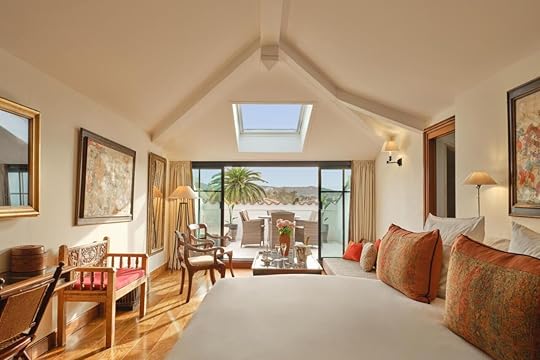 Photo: Booking
Photo: Booking Photo: Booking
Photo: Booking Photo: Booking
Photo: Booking Photo: Booking
Photo: BookingSee more photos
Entry-level rooms at Pan Deï Palais are bathed in natural light and accented with sculpted paneling and Indian artworks. The French General Jean-François Allard commissioned the townhouse for his wife, Bannu Pan Deï, a princess from Himachal Pradesh. After falling in love, the couple relocated to the south of France and made this picturesque mansion their family home. The Indian furnishings remain as an homage to their romance contrast yet complement the French Riviera setting.
Maybe you’re not in the position to build a townhouse for your significant other yet but you can always surprise them with an upgrade at one of the suites. Perfect for honeymooners and anniversaries, the Tropezian Suite roosts in the mansion’s attic and grants panoramic views from the private terrace. One floor down, the two-room Princess Suite overlooks the idyllic village of Saint-Tropez and can be connected to the Prestige Double Room for a family or group.
Joie de vivre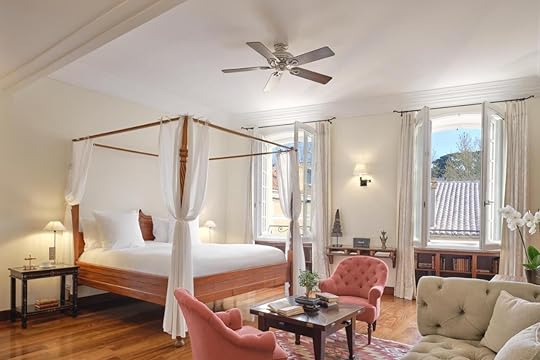 Photo: Booking
Photo: Booking Photo: Booking
Photo: Booking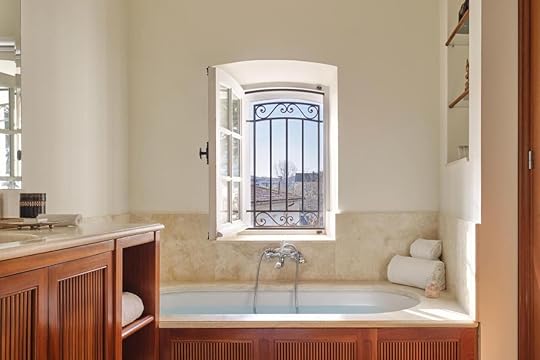 Photo: Booking
Photo: Booking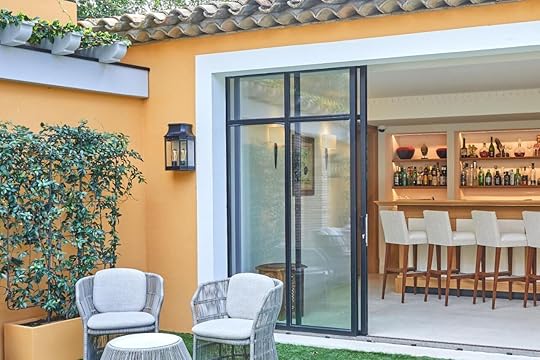 Photo: Booking
Photo: BookingSee more photos
Pan Deï Palais is one of the only luxury hotels in the center of Saint-Tropez to have both a private pool and a private beach. The tiled pool sits in a hushed garden and is heated for four-season swimming. This property is designed as a place to relax under the sun and enjoy simple pleasures while your personal butler is on hand to arrange spa bookings, tours, and local restaurant reservations.
Don’t miss the Picnic Chic Experience by Airelles. A hamper of freshly baked pastries, charcuterie, seasonal fruits, and fine rosé wine will be laid out in a secluded spot in the gardens of the hotel’s sister property, Château de La Messardière. The two hotels also team up for the annual Les Voiles de Saint-Tropez giving you the opportunity to hop aboard a yacht and cheer on the regatta events from the water.
Children and teenagers can sign up for the Airelles Summer Camp at Château de La Messardière. The program encompasses creative workshops and treasure hunts to supervised outdoor pursuits. The compound has a kids-only pool, cinema, and library where they can unwind and make new friends between activities.
Culinary paradise at Pan Deï PalaisFrench bourgeoisie meets the Far East at Les Délices du Pan Deï where padded slipper chairs are drawn around fireside tables and murals depict rural India. There are countless bistros in Saint-Tropez but you’ll appreciate putting aside at least one night to feast on the hotel’s tasting menu. Les Nuits du Pan Deï transforms the restaurant and terrace into a candlelit haven with live music and a marriage of Indian and Mediterranean cooking.
A simple yet substantial continental spread is served poolside to enjoy en plein air each morning. Besides snagging tables in the village restaurants, your butler can make arrangements to dine over at the Château de La Messardière.
Pan Deï Palais hits all the right notes for a Côte d’Azur hideaway. It nods to traditional hospitality and captures the glamor of the jet set 1960s while keeping modern travelers’ needs at the forefront. 
Global guide to wild camping
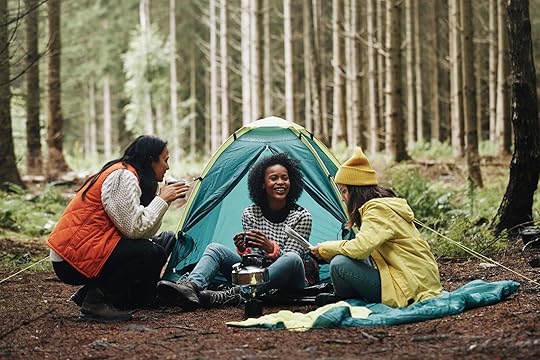
Sleeping under the stars, waking up to the smell of fresh air, and really getting away from it all — the appeal of wild camping is easy to see. Also called dry, free, or freedom camping, wild camping is overnighting away from organized campsites, and their noise and crowds, to set up camp among the wilds of nature instead.
After seeing all those Instagram images of carefree wild camps, you may be ready to grab a backpack and set off yourself. But a wild camping trip requires more preparation than a stay at your average campground. To save you from paying a hefty fine for trespassing or waking up freezing at 2:00 AM, here’s everything you need to know before you pitch your camp in the great outdoors.
What is wild camping?Wild camping in the US and CanadaWild camping in EuropeWild camping in Australia and New ZealandWild camping in Africa, South America, and AsiaWhat to pack for a wild camping tripHow wild camping is different than regular camping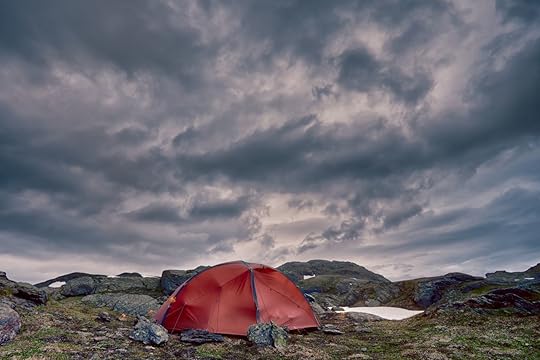
Photo: Jens Ottoson/Shutterstock
Wild camping might seem as easy as just trekking off into the nearest woodland. Don’t be fooled. It can be dangerous and even illegal, since the laws that govern where you can and can’t pitch camp vary from country to country.
Before you set off, make sure you’re prepared to deal with the following:
Fire: While sitting around a roaring fire trading campfire stories might seem like part of the wild-camping-trip experience, never light an open fire. And, if you’re camping in a region where wildfires are a risk, exercise extra caution, pay attention to local weather forecasts, and plan a safe escape route from your camp should you need to abandon it.Water: Unlike campsites, nature doesn’t come with an easily accessible water source. Plan to camp near running water. Then pitch your tents at least 150 feet away and designate an area for taking care of nature’s business that’s at least 200 feet away to avoid waste and litter pollution. Also, never drink from still, unmoving water.Weather: It can change quickly and present real dangers. Check the weather before your trip and pack accordingly. As well as clothing, you should also think about food: if it’s cold, a flask might be a good addition, but if it’s hot you may need to take more water.Animals: Humans might be the biggest danger, but they’re not the only ones on a camping trip. Research whether any local animals or reptiles, like bears or snakes, pose a risk to you before you set off. You can then avoid mistakes such as leaving food out where it’s likely to attract unwanted visitors.Local laws: Even with everything else worked out, you still need to make sure you’re not going to be woken up by an angry farmer — or worse, a park ranger — telling you to pack up and get out at 3:00 AM. Here’s a rough guide to some countries’ laws on wild camping:Wild camping in the US and Canada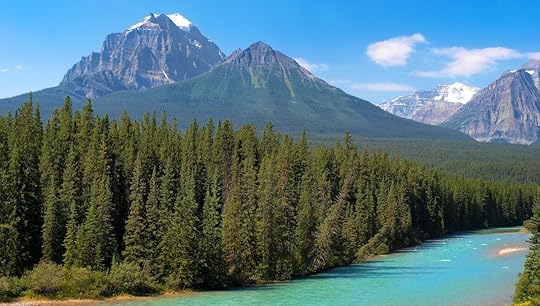
Photo: canadastock/Shutterstock
Legally, you can wild camp in US national forests and grasslands (unless otherwise marked), on Bureau of Land Management lands (providing they’re suitable for camping and not being used for cattle grazing or mining operations), and on Canadian Crown Land. You can also wild camp in the “backcountry” of national parks and national monuments, but you’ll need a permit and regulations apply.
Elsewhere various national, state, and local governments manage areas of land, and there are also private properties and Indian reservations to take into consideration. If you want to wild camp outside the permitted areas above, do your research beforehand to make sure you’re not trespassing.
Wild camping in Europe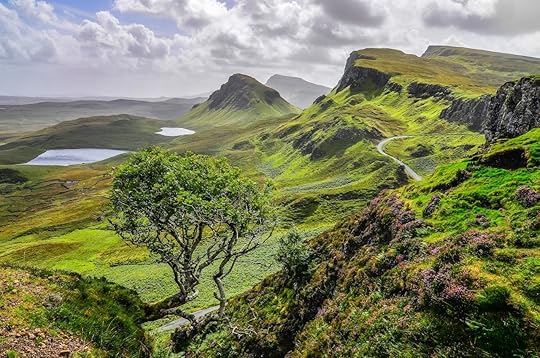
Photo: Martin M303/Shutterstock
Practically every European country has different rules and regulations on wild camping. To simplify things, these are the areas of Europe where responsible wild camping is encouraged, even if not strictly legal:
England and Wales — Wild camping is generally not allowed in England and Wales. This is because most of the land is privately owned. However, there is one exception: Dartmoor National Park in England.Scotland — You can camp pretty much anywhere in Scotland that isn’t fenced in or cultivated land, as long as you follow a few simple guidelines. Camping must be lightweight, done in small numbers, and only for two or three nights in one place.France — Wild camping is permitted only on private land with the consent of the owner.Sweden — Camping is permitted for a maximum of two days.Norway — The right to roam, also called the right of access, or allemannsretten, confirms the public’s right to wild camp.Finland — Campers must be a suitable distance from homes or cabins.Denmark — While it’s illegal to wild camp wherever you want, you can pitch a maximum of two small tents together in at least 40 approved forests.Romania — Although not strictly allowed, wild camping is widely tolerated. Check with the landowner first.Iceland — Camping with no more than three tents is allowed on uncultivated ground for a single night, although the use of campsites is preferred.Slovakia — Wild camping is legal but forbidden in areas with a level three protection and above. Campfires are not permitted.Turkey — Wild camping in Turkey exists in a bit of a grey area. Technically, it’s not allowed, but the enforcement is lax. Many campers have reported success finding beautiful spots to camp for free, especially in the western part of the country.Across the rest of Europe, wild camping is either strictly illegal — as in Italy, Croatia, and Portugal — or allowed but only in certain regions, such as in Spain. If you have any doubts, ask the landowner for their permission. You never know, they might be more than happy for you to set up camp for a night or two.
Wild camping in Australia and New Zealand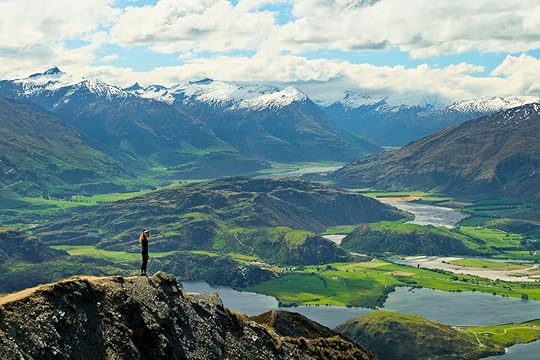
Photo: Tobin Akehurst/Shutterstock
Although you can wild camp pretty much anywhere in the Outback, Australian laws on wild camping elsewhere are surprisingly strict. Over the Christmas and New Year period alone, Byron Shire council doled out 218 infringement notices for illegal camping.
The good news for wild campers is that you can still get an “authentic” wild camping experience at thousands of certified “free camping” sites in national parks, state forests, and other rural locations across the country. As the name suggests, many of these offer few to no facilities and cost nothing to stay at, although for sites within the national parks you’ll need a permit and, in some cases, to book in advance.
If the above sounds too civilized and you’re still determined to wild camp, New Zealand’s regulations are more relaxed. Providing it’s not expressly prohibited, you are permitted to wild camp on public conservation land.
Wild camping in Africa, South America, and Asia
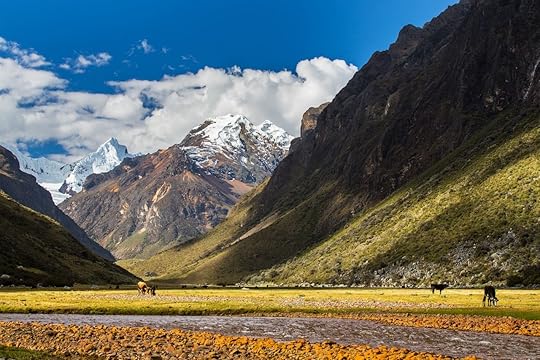
Photo: Calin Tatu/Shutterstock
While it is possible to wild camp in some nations in Africa, South America, and Asia, in large parts of these regions it is either illegal or too dangerous to do so, particularly if you’re not familiar with the local area or political climate. To experience camping in any of these places, it is strongly advised that you employ a guide who’ll be able to show you the safest place to camp.
What to pack for a wild camping tripYou know all the essentials you’re supposed to bring camping: wool socks, warm layers, bug spray, sunscreen — you get the idea. But when you go wild camping, you need to pack a few extras to see you through your trip safely.
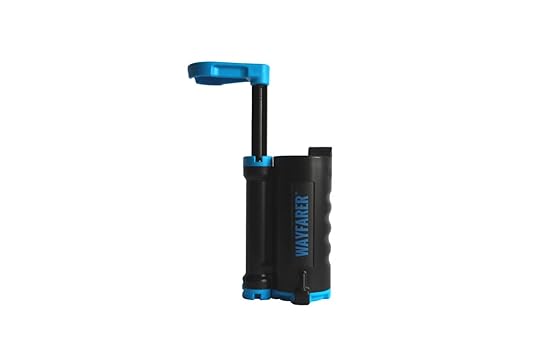
Photo: LifeSaver
While purification tablets might seem cost-effective, they usually have a strong taste. Water filters, on the other hand, are easier to use and more convenient. If you’re planning on camping a lot, it’s worth investing in a compact Lifesaver water purifier, or even getting a bottle with an built-in filter.
Also pack enough food for your entire trip, plus a little extra in case of emergencies. Choose foods that are high in calories and don’t require refrigeration.
In remote areas, phone signals and GPS can be unreliable. A compass, used with a topographical map, allows you to find your bearings, orient the map, and pinpoint your location. This is essential for staying on track, finding your campsite, and safely navigating back to civilization if needed. National Geographic and Gaia GPS both have excellent maps you can download or print in advance. Just make sure you keep them somewhere dry like a waterproof case.
“Take nothing but memories, leave nothing but footprints” applies to everything when you’re wild camping, including poop. Pack unscented toilet paper, a trowel (small, pointed shovel), and dog-poop bags or something similar. Then, if nature calls, bury your business at least six inches underground, and at least 200 feet from water. In some places you can burn the toilet paper in the hole, but in other areas all fires are prohibited. Best of all is to pack it out with you.
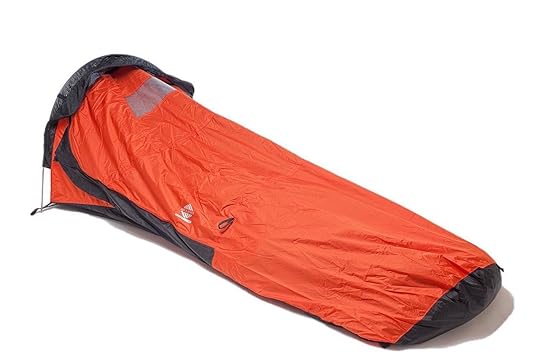
Photo: Amazon
A good quality, lightweight tent such as The North Face Stormbreak 2 Tent, is essential for wild camping. Choose a tent that is appropriate for the conditions you will be facing, such as the number of occupants, the season, and the expected weather. Also a decent three-season sleeping bag will do the trick for most trips and sleeping pad will help to insulate you from the cold ground and make you more comfortable.
While any tent you buy for wild camping should weigh less than 4.5 lbs. (or 6.5 lbs. if you’re sharing the load between two), tents can be bulky and inconvenient to pitch and dismantle, not to mention expensive.
Bivvy bags (thin, waterproof bags used over the top of a sleeping bag) are a cheap, lightweight alternative. They’re only good for short trips of one to two nights, given the condensation that even the best ones leave inside sleeping bags. If you use one for longer, you’ll have to find a place to hang your sleeping bag to dry out. That said, bivvy bags are the best way to properly experience the outdoors — unless it rains.
If it does rain, you’re guaranteed to get wet in a bivvy bag. In that case, you can always rig a tarpaulin over you to keep the worst of the elements at bay. But if snow or heavy rain is forecast, or if you’re planning on wild camping for more than a few days, stick to the tent.
Just remember, wild camping doesn’t have to be a 100-mile, week-long trek. It could be as simple as packing a bag with enough gear for one night, setting off for a micro adventure, and getting home in time for breakfast. Although, as most wild campers will tell you, bacon and eggs cooked at sunrise somehow always taste much better. 
April 8, 2024
You Can Now Take Archery Lessons on a Cruise on Cunard’s Newest Ship

Cruise lines rack their brains to keep you entertained, especially when on sailings that involve a lot of sea days, like transatlantic cruises. From trivias to dancing lessons to origami workshops and pickleball tournaments, activities coordinators make sure that there’s always something on the program for passengers to have fun and learn something new. But no cruise line is going as far as Cunard in its quest to keep passengers occupied with a novel activity. On board Cunard’s newest ship, the Queen Anne, whose maiden voyage will take place on May 3, 2024, passengers will have the chance to practise archery, with real bows and arrows.
In the first-ever accredited archery activity at sea, Cunard will provide its passengers a free introduction to archery in a custom-designed, professional grade enclosure on board the Queen Anne. The introductory program, taught by fully trained and accredited instructors, will allow Cunard cruisers to learn the basic techniques of archery, as well as all the safety precautions needed for practise the sport. According to a Cunard spokesperson, “There will be face to face instruction on the range, exciting rounds of shooting, and of course, an incredible sea view. On longer voyages, the range can be made available for open shooting for those who complete the introduction and training sessions.”
While the new activity should be enough to make cruisers want to book a sailing on the Queen Anne, Cunard’s newest ship has a lot more going for it. The first new Cunard ship in 13 years, the Queen Anne will be the most contemporary of the fleet and the most luxurious, with two beautiful pools (one indoor and one enclosed by a glass dome that opens when the weather is good enough); one wellness studio and spa equipped with the usual steam bath and thermal loungers, as well as a cool room and Himalayan salt sauna; 15 restaurants, and beautifully decorated staterooms. 
This Cheap Phone Case Has Withstood My Outdoor Travel Lifestyle for 3 Years
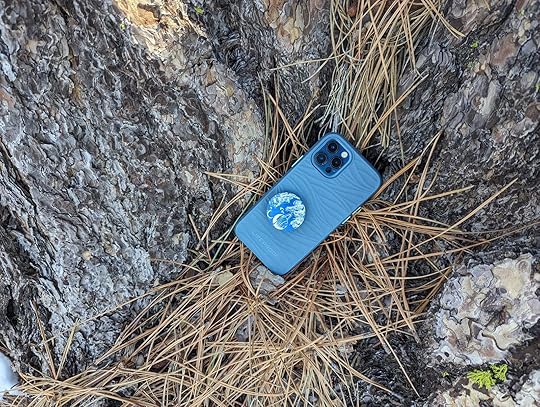
I’ve had a cell phone since I was about 14 years old, and it seems like in that entire time, I’ve been trying to find the ideal phone case. Since I have pretty outdoorsy hobbies, and tend to be on the clumsy side, I know I’m hard on phones. But it used to be that in order to fully protect my phone, I had to have a big, bulky cell phone case.
But a few years ago, I tried a slim, light, and definitely inexpensive iPhone case: the Wāke case from Lifeproof (owned by Otterbox). It’s sleek, subtle, and has managed to withstand a hell of a lot more impact than I’d expect for the price.
If you’re in need of a cheap phone case that works like a champ, here’s why you may want to give the Wāke a try.
We hope you love the spaces and stays we recommend! Just so you know, Matador may collect a small commission from the links on this page if you decide to make a purchase. Listed prices are accurate as of the time of publication.
It’s surprisingly durable
Yes, my phone is super-dirty — but it’s not scratched or broken. Photo: Suzie Dundas
I’m an outdoor writer and I live in the mountains, so my hobbies have the potential to break a phone (or my body, I suppose). Snowboarding, mountain biking, hiking, and rock climbing can be hard on a phone. But somehow, this cheap phone case has managed to withstand it all.
Even on a day with no crashes or spills on the trails or slopes, I’m still tossing my phone on the ground or leaving it bouncing around in a plastic bin of bike gear. But that’s on a good day. Here’s a brief list of what I’ve put my phone through multiple times:
Having it fly out of my pocket while speedy downhill mountain biking (multiple times this year alone)Dropping it in the snow while snowshoeing (and potentially having it get run over by cross-county skiers)Dropped it on the floor of safari vehicles, seaplanes, and scuba diving boatsHaving it drop out of my pocket while climbing (certainly from higher than the six feet it says it can withstand)Dropped it on dirt, rocks, and boulders while camping and hiking…and somehow, it’s spared my phone every time. Sure, it’s probably dumb luck to some degree, and the outcomes could have been different if the phone landed face-down instead of face-up. But I had this case on my phone for three years, and my screen didn’t have a scratch. For someone who mountain bikes almost every day in the summer, that’s pretty damn impressive. It says it’s only rated to protect phones for drops up to six feet/two meters, but it’s protected my phone for larger drops than that.
It’s slim and fits in pockets
The cheap phone case is super-slim and doesn’t add any bulk to my phone. Photo: Suzie Dundas
I’ve used bulkier cell phone cases, some of which had multiple pieces, separate screen protectors, and plugs and flaps to cover the various ports. And they’re a huge, huge pain. Bulky, rubbery cases make it difficult to slid your phone into your pocket with one hand while snowboarding or climbing — and the extra bulk means it may not even fit in your pocket. I also don’t like the extra friction caused by bigger and grippier cases, as I find it makes my phone get caught more in pockets and bags.
But the Wāke cases are very slim. They add almost nothing to the width or size of my phone, and even with the case on, I can fit it in shorts or backpack pockets that are just barely big enough. The wave pattern on the back of the case certainly makes it much less slick than the glass phone alone, so it doesn’t slide off sheets when I toss it onto my bed or fall out if my open purse tips over. But it doesn’t have that rubbery, grippy finish that makes other cases get caught on every surface they touch.
They’re made from ocean plastic
Despite being a relatively cheap phone case, items in the Wāke line are made from ocean plastics (mostly fishing waste). Photo: Otterbox
Phone sizes and shapes seem to change every time a new model comes out, which means you’ll probably need a new phone case every time you upgrade. Landfill plastics are an enormous program, to the point where merely stating that seems like it’s minimizing the issue. Some estimates suggest that humans throw away 1.8 billion cell phone cases per year, which could be true, when you consider that about 5 billion people around the world have cell phones.
While the Wāke cases aren’t themselves recyclable, they are made with recycled products, rather than new materials. Roughly 85 percent of each case is made from salvaged fishing gear (ocean trash, basically), and the all-cardboard packaging is fully recyclable. As a brand, about the half the material Otterbox uses comes from recycled plastic, rather than new materials.
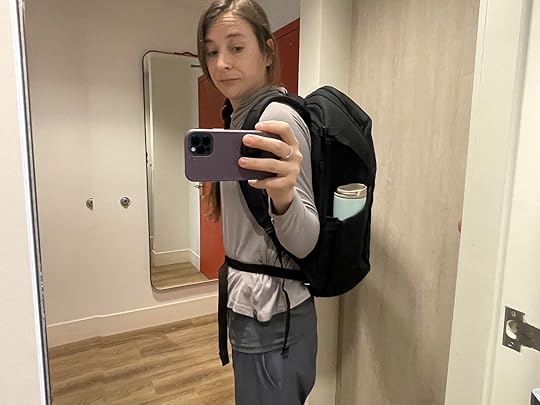
I replaced my first Wāke case (this purple one) after three years — and bought the same one in green for my new phone. Photo: Suzie Dundas
Is it a perfect, long-term solution? No. But it’s a step in the right direction.
By the way, if you noticed the PopSocket on my phone: PopSocket runs a phone case recycling program. You can send them any old case you have (plus old PopSockets) and they’ll recycle them for you. If you’re someone who drops your phone a lot (say, while taking photos off the side of a boat or safari vehicle), I would very strongly suggest buying a PopSocket. Mine has stayed put on the back of the Wāke, even with the case’s raised wave pattern. And it makes holding my phone one-handed feel a heck of a lot more secure. It’s well worth the $10 or so they cost.
It’s not expensiveI have an iPhone 12 Pro, which I thought was pretty current, but apparently, I’m several models behind. But that’s great for me, because the Wāke case for an iPhone 12 Pro is between $7.75 and $9.99, depending on your color preference. Depending on what model you have, that number may go up a little, but it’s still a pretty cheap phone case, regardless.
The iPhone 11 Pro Max starts at $7The iPhone 12 Mini starts at $19The iPhone 13 case starts at $8The iPhone 13 Pro case starts at $10The Galaxy S22 (Samsung) starts at $10The Galaxy S22 Ultra (Samsung) starts at $12The downsides
Sure, some of the protection is probably due to dumb luck of falling the right away, but I’ve put this cheap case through the
The two primary cons I can think of for the Wāke case are that it’s not as durable as other cases, and the limited availability.
Personally, I’ve found the Wāke to be more than durable enough for my lifestyle, which is pretty darn active. But there’s no denying that it won’t protect your phone if it gets run over by a car or dropped from a five-story rooftop. For that, you probably need something bulkier and thicker, like the Defender XT, which comes in models for the iPhone 13 and 14, iPhone 14 Pro, the iPhone 15, the iPhone 15 Pro Max, the iPhone 15 Pro, as well as other phones like the Pixel 8 and the Galaxy S24. It includes a screen protector (which the Wāke doesn’t have), but is also more expensive, at around $40-$65, depending on your phone model.
The second downside is that it seems the Wāke cases may be discontinued, since they only seem to be available for the iPhone 13 and earlier. So if you’re interested, you may want to snag one before they’re no longer available. 
Want to Party in Amsterdam? The City Asks You Take This ‘Amsterdam Rules’ Quiz First

The Netherland’s early decriminalization of cannabis (1976) and legalization of prostitution (2000) has turned Amsterdam into Europe’s wildest party destination. For decades, the Dutch capital city has been the preferred spot for drug, alcohol, and sex-fuelled vacations, including raucous bachelor parties (also known as stag dos or stag parties), but the fun has gone a little too far and now Amsterdam and its inhabitants want to clean up its reputation and its streets. The city hopes that the ‘Amsterdam Rules‘ quiz might help.
In an effort to attract less problematic tourists, i.e. those who are less interested in sex shows and coffee shops and more focused on tulips and the Rijksmuseum, the city of Amsterdam has created a quiz meant for potential visitors. Prospective tourists to Amsterdam just need to answer a few questions about what they’d like to do while in the city and, depending on their answers, will get told that they should go ahead with their trip or just change their plans altogether.





Whether or not the quiz will help deter the party animals from traveling to Amsterdam and vomiting all over the locals’ flower boxes or peeing on the facades of their lovely canal houses remains unclear, but it’s another step towards making the city more enjoyable for everyone.
The ‘Amsterdam Rules’ quiz is the latest of Amsterdam’s attempts to dissuade partiers to come to the city. In the past few years, the rules have been tightened around what one can or cannot do in Amsterdam, especially in the Red Light District, where a lot of the messy partying happens. Guided tours of the Red Light District were banned in 2020, public drinking and cannabis smoking are forbidden, pub crawls are prohibited, bachelor parties are no-gos, and there’s even been talk of moving the Red Light District from the center of the city entirely. In 2023, the city of Amsterdam has gone as far as launching an explicit ad campaign that asked young British male tourists to “stay away”. 
Part of an Engine Apparatus Fell Off During a Southwest Flight Sunday Morning

It’s no secret that airlines have been in the news lately for airplane issues, ranging from mid-air disasters to hiccups related to passengers behaving badly. But on Sunday morning, attention was once again drawn to Southwest Airlines, when a piece of its engine apparatus fell off mid-flight.
According to the airline, Southwest Airlines Flight 3695 left Denver International Airport at 7:40 AM on Sunday, April 7. It was bound for Houston, Texas, but during takeoff, passengers reported hearing a loud bump. Moments later, someone noticed something understandably alarming: a large piece of one of the engine covers, called a cowling, had fallen off and was stuck on the wing.
#Breaking #Ongoing Southwest Airlines Flight 3695, a B-737, was involved in an incident in Colorado (US). No injuries aboard. On take-off from Denver, the jet lost the engine cowlings from the #2 engine. The flight later made a safe return to Denver International Airport. Updates… pic.twitter.com/ozTx8Hg5a9
— Air Safety #OTD by Francisco Cunha (@OnDisasters) April 7, 2024
The plane immediately turned around and returned to Denver without incident, with no injuries reported. The flight was assigned to a different plane, which brought passengers to Houston about three hours behind schedule.
The Federal Aviation Administration (FAA) announced in a very short statement that it will investigate the incident, simply reporting “Southwest Airlines Flight 3695 returned safely to Denver International airport around 8:15 a.m. local time on Sunday, April 7, after the crew reported the engine cowling fell off during takeoff and struck the wing flap. The aircraft was headed to William P. Hobby Airport in Houston. The FAA will investigate. Please contact the airline for additional information.”
It’s no surprise what company made the plane
Photo: First Class Photography/Shutterstock
It’s Southwest and United airlines that have been in the news the most lately, but that’s because both airlines are the largest buyers of planes from one company. And it won’t surprise anyone what that company is: Boeing. Boeing has not made a public comment on the incident, but the FAA has been investigating the airplane manufacturer for a series of quality control issues that began in January 2024, when an airplane door flew off a Boeing plane mid-flight.
Since then, it’s failed a production audit, and the FAA announced after an investigation that it had “identified non-compliance issues in Boeing’s manufacturing process control, parts handling and storage, and product control.” In March, the FAA gave Boeing 90 days to fix its quality issues, while simultaneously forcing it to halt production on any new 737 MAX aircraft. Of the major airlines, Southwest and United have the most 737 MAX jets in their fleet, which may explain why those two airlines have seen the lion’s share of airplane issues over the last four months.
Boeing is the largest producer of commercial aircraft in the world, and is, along with AirBus, one of only two large-scale commercial aircraft producers in the world. It’s estimated that roughly 42 percent of commercial aircraft in use are produced by Boeing. 
Google Flights Will Refund You Up to $500 if the Price Lowers After Booking

Flights are unquestionably more expensive than usual right now. This is due to the substantial demand for travel following the pandemic and the consequent rise in operating costs. With fewer seats available to meet the high demand, prices have skyrocketed. So, finding a good deal on a flight is more important than ever, but what happens if the price plummets after you book? If, like me, you study price charts on Google Flights but then book directly with the airline, you might be making a mistake.
In April 2023, Google Flights introduced a “price guarantee” policy that many people are unaware of. The booking system can refund passengers the difference in price if the cost of the flight drops after the ticket is purchased.
Google Flights offers this for select flights departing from the US. These flights are specifically marked with a “price guarantee” badge. Once you book one of these fares, Google Flights will keep track of its price until your departure date. If the price goes down, you will be refunded the difference between what you paid and the new lower price. The amount will be credited directly to your Google Pay account.
There are a few things to keep in mind. First, you won’t get money back for small price changes — the difference needs to be more than $5. Second, there is a cap of $500 total that you can receive back in a year, and the funds can be spent on other “price guarantee” flights (maximum of three flights). Finally, you will need to have Google Pay to claim your refund.
Google says customers must look out for the “colorful badge” on flights departing from airports in the US. Customers must be signed in with the country or region as the US with prices in dollars.
While not every flight is covered, the “price guarantee” program can give you peace of mind knowing you got a good deal on your plane ticket or get some money back if the price unexpectedly drops. 
By Kayaking With This California Company, You’re Giving Underserved Kids Access to the Beach

The La Jolla Ecological Reserve, also called the San Diego-La Jolla Underwater Park, encapsulates over 6,000 acres of critical ocean habitat off the Southern California coast. The area, ringed by the cragged rocks of La Jolla Cove and the sun-drenched La Jolla Shores Beach, draws visitors year-round to its waters to witness some of the most abundant sea-life popilations in San Diego County. Since November 2010, one local tour operator has provided guests a way to experience this rich marine environment while contributing to its ongoing protection – and giving underserved youth the chance to experience the same.
To avoid harmful boat emissions, Everyday California’s excursions take guests paddling from shore to swim amongst dolphins, sea lions, and other marine life while respecting and preserving their habitats. The company’s kayaking, paddleboarding, and snorkeling tours explore the La Jolla Ecological Reserve, home to one of the highest concentrations of sea life on the West Coast. Here they’re able to view dolphins, shovel nose guitar fish, Garibaldi, and the occasional sea turtle swimming around the reserve’s two artificial reefs.
“What makes this area so special is that the marine protected area has been around for so long that the marine life is thriving, the kelp forest is thriving, the beaches are beautiful,” Everyday California founder and CEO Chris Lynch told Matador. “When you look around the world, it’s so important to see what happens to our ecosystem when you actually protect it.
Immediately after launching the business, Lynch knew the company could make a big impact in keeping this area special.
Everyday California partnered with 1% For The Planet to boost its impact
Photo courtesy Everyday California
“We started as a couple of beach bums with an old pickup truck and some old kayaks and westsuits,” Lynch says. “We had a storage unit that we would drive to and drop our equipment down on the beach.”
Of course, getting on the water has long been part of La Jolla’s culture. What separates these tours from others, however, is the brand’s regenerative and community-building focus. Part of the revenue from each sale goes towards environmental and community efforts, including providing surfing and kayaking lessons to kids who otherwise couldn’t afford them. Through the experience, the kids not only get to surf but also learn to be stewards of the environment both at the beach and where they live.
While catching momentum with its ocean-based tours and kids programs, Lynch and his team knew they wanted to further their positive impact on the reserve’s ecosystem. The company brings in enough revenue to employ around 100 people in the summer and distributes its gear to some 150 retail locations. 75,000 people per year tour with the company or visit its flagship store in La Jolla. This level of market saturation meant Everyday California could contribute a small portion of its revenue to a viable charity and have a big impact. Lynch chose 1% For The Planet after reading reading Yvon Choinard’s book, Let My People Go Surfing.
“Seeing Patagonia do business how they have was really inspiring,” Lynch says. “We have aspirations of being a big apparel brand. Seeing what Patagonia has done leading the way with environmental stewardship, we want to do business like that. We are working towards that goal.”

Photo courtesy Everyday California
Through the partnership, Lynch and the company provide funding to non-profits including Green Wave and Urban Surf 4 Kids, which teaches surfing to kids who grow up within proximity to the ocean, but rarely get to access the ocean due to economic circumstances or lack of transportation. The company has donated more than $100,000 to date.
“It’s crazy, a lot of these kids live 20 or 30 minutes from the beach in San Diego, but they never go to the beach,” Lynch says. “If you’re in the system, you’re not allowed to go anywhere unsupervised. That’s been a huge impact for us is that they get to learn how to surf, but we also get to teach them about the marine protected environment, about the animals, about how littering 20 minutes from here is going to end up in the ocean.”
The same eco-first mindset plays out in Everyday California’s physical products. Lynch and his team began making reef-safe mineral sunscreen shortly after launching tours to ensure guests, and eventually the general beachgoing public, could access the water without leaving behind harmful chemicals. The line now includes sun- and sand-resistant shirts and hoodies, swimsuits, hats, and beach gear, all crafted to make as little impact as possible and with recycled material when they can.
“What’s important to us about sustainability is that this is why we started the company,” Lynch says. “We wouldn’t have the business success that we’ve had without that, and we always stress this in the training with our tour guides, instructors, and staff. Our goal is to teach all of our customers why this area is so special and why we need to protect it.”
In addition, Lynch and his team emphasize small action items that every beachgoer can do to help protect the areas they love.
“The most important thing is to pick up any trash that you see,” he says. “We’re always making a point of this. If you’re out on the water, leave it better than when you got there.” 
In Barbados, the Coral Reef Club Hosts Pristine Beachside Accommodations

Located on the west coast of Barbados, the Coral Reef Club Hotel is a family-owned luxury resort with world-class amenities and sterling service. Eighty suites, cottages, and villas are lodged on 12 acres of landscaped gardens with only two swimming pools between your canopied bed and the Caribbean Sea. Slender yet sandy, the beach offers calm conditions. Closer to the shore and restaurant, the larger pool tends to be busier whereas the waterfall pool near the cottages flies under the radar. For utmost privacy, superior units have their own dipping pools.
The Coral Reef clientele leans toward families although it’s popular with young couples, spa-goers, and senior travelers. Hummingbirds flit between frangipani and ylang-ylang trees while monkeys are often sighted leaping between the casuarina pines. This paradisiacal report is a 15-minute walk from the duty-free stores of historic Holetown and no more than a half-hour drive to the island’s headline attractions.
We hope you love the Coral Reef Club! Just so you know, Matador may collect a small commission from the links on this page if you decide to book a stay. Listed prices are accurate as of the time of publication.
Family-friendly accommodations in BarbadosResidences at the Coral Reef Club are traditionally designed with wooden balustrading, fretwork, and shutters. Luxury cottages come as one or two-bedroom units. All configurations have a spacious balcony while top-tier domains have private sunken pools bounded by palms. Kid-friendly villas comprise up to four bedrooms and vast lawns strategically placed near the largest swimming pool.
Any infant or toddler apparel – inclusive of playpens, cribs with mosquito nets, and baby monitors – is available at no extra cost. The family program entertains younger children with sailing and swimming tuition whereas tweens and teens can enjoy the complimentary paddle boards, kayaks, and Laser dinghies. Professional babysitters and childminders are only a phone call away.
This barefoot luxury resort in Barbados also caters to couples. Five coveted plantation suites come with spa-like bathrooms and private plunge pools angled at the sea. An adult-only booking period runs between late January and the end of February each year.
Starting at US$855 for two, the A-Class Arrival service is offered to all prospective guests. After a fast-track airport transfer, you’ll be whisked straight to the spa for rejuvenating massages while chilled Champagne and crudités are readied in your suite.
Wellness at the Coral Reef Club Spa Photo: Booking
Photo: Booking Photo: Booking
Photo: Booking Photo: Booking
Photo: Booking Photo: Booking
Photo: BookingSee more photos
Upgrade or not, don’t miss out on a pampering session. The wellness center sits in a secluded plot with tinkling waterfalls and birdsong supplying the soundtrack. You can’t go wrong with the signature lemongrass and ginger scrub coupled with a customized muscle melt ritual. Other facilities include the external hydro pool and a thermal suite with a crystal steam room. Yoga classes take place on Tuesday and Thursday mornings.Watersports, golf, and turtles
 Photo: Booking
Photo: Booking Photo: Booking
Photo: Booking Photo: Booking
Photo: Booking Photo: Booking
Photo: BookingSee more photos
This award-winning resort gives you the best of Barbados. Non-motorized water sports equipment including Hobie Cat and Laser dinghies, kayaks, and paddle boards come complimentary. Snorkel gear is readily available for making the most of the crystal-clear waters and open-water diving courses and excursions are bookable at the property’s diving center. Qualified divers can explore shipwrecks or splash out on a twilight dive.
Right next door to Coral Reef Club, the Barbados Sea Turtle Project welcomes guests to spectate hatchling releases. Extended volunteering placements are one way to justify a longer stay in the West Indies.
Additional amenities include complimentary tennis coaching and privileges at two supreme golf clubs. Designed by Tom Fazio, the 18-hole Green Monkey at Sandy Lane is one of the most expensive golf courses ever built. This is reflected in its exclusivity: you’ll need to plan ahead to wrangle one of the limited tee times. Over at Royal Westmoreland, you can warm up on the driving range and practice greens before tackling Robert Trent Jones Junior’s championship par 72 course.
Upscale dining at Coral Reef and sister SandpiperPerched on the shoreline, the restaurant will dazzle you first with its views, second with its culinary offering. Both are best enjoyed with a freshly shaken Spicy Reef Margarita.
The fusion a la carte menu changes daily while the buffet is loaded with an assortment of such Bajan specialties as fried flying fish, lamb stew, and jerk chicken prepared with mango and chili. And, as with all British-owned resorts in Barbados, bubbly afternoon tea is a must.
Thursday is barbecue night at the Coral Reef Hotel. With sizzling filet and sirloin steaks, pork ribs, jumbo prawns, and fish kebabs dished up alongside catch of the day, you’d be wise to skip lunch that day. Calypso, steel band, jazz, piano, and reggae acts perform nightly during the winter months. Although this is a child-friendly hotel, kids under five aren’t permitted in the restaurant after 7 p.m. but they’ll have a whale of a time with the hotel childminders.
Guests of the Coral Reef Club are invited to dine at the sister hotel, The Sandpiper. Swing by the beach bar and order the Harold’s Smile mixed in front of you by the cocktail wizard, Harold Shepherd. Skip the Mount Gay distillery tour and ask for seconds. 
April 5, 2024
This Toiletry Bag Is a Neat Freak’s Ultimate Travel Accessory

As I get older, I become fussier, principally when it comes to cleanliness. I don’t travel with a bottle of Lysol or make excessive use of hand sanitizer, but I do have some quirks: I tend to avoid public bathrooms, I don’t like walking barefoot on hotel carpet, and I never put down my toiletry bag on surfaces that aren’t my own, no matter how clean they seem.
Until recently, I owned one small transparent vinyl toiletry bag for when I traveled with a carry-on only, and a huge handmade floral cloth one for when I checked a bag, both of which had to rest on a bathroom vanity to be usable, giving me the ick. Like a knight in shining armor, earlier this year, Sea to Summit sent me two of their hanging toiletry bags to test, one size small and one size large, allowing this neat freak to finally relax.
We hope you love the items we recommend! Just so you know, Matador may collect a small commission from the links on this page if you decide to make a purchase. Listed prices are accurate as of the time of publication.
Buy NowWhat I like about the Sea to Summit hanging toiletry bag
Unsurprisingly, my favorite feature about this toiletry bag is the fact that you can hang it from a shower curtain rod, a towel rack, a robe hook, a wardrobe knob, etc. and it never has to rub on any potentially yucky surfaces. The hanging hook (which sits a neat little compartment when the bag is zipped up) is sturdy and made so that the dopp kit hangs flat without twisting or turning.
 Large version, empty, with mirror. Photo: Morgane Croissant
Large version, empty, with mirror. Photo: Morgane Croissant Hook on the large version of the hanging toiletry bag. Photo: Morgane Croissant
Hook on the large version of the hanging toiletry bag. Photo: Morgane Croissant Back pocket on the large version. Photo: Morgane Croissant
Back pocket on the large version. Photo: Morgane Croissant The large version, filled with all my stuff. Photo: Morgane Croissant
The large version, filled with all my stuff. Photo: Morgane CroissantOnce open and hanging, it’s easy to see everything inside this toiletry bag. There are two zipped mesh pockets inside the closing flap, and one mesh open pocket in the main compartment, allowing you to keep your belongings tidy, visible, and easily accessible. And because it’s made of water-resistant fabric, you can even use your wet hands to reach in for what you need without creating a soggy mess. Sea to Summit optimized the space even further by adding a zipped pocket on the back of the bag; however, it’s a thin and opaque compartment that’s not as practical as the rest, so it’s better used for stuff you don’t need all the time but want to keep dry, like tampons, pads, or tissues.
The Sea to Summit hanging toiletry bag is lightweight (2.8 ounces for the small version and four ounces for the large one), soft-sided (it has no solid structure so it takes as much space in your luggage as what you put inside of it), and the way it zips up makes it very compact — all good qualities for backpackers and space-conscious carry-on travelers.
 The toiletry bag when closed. Photo: Morgane Croissant
The toiletry bag when closed. Photo: Morgane Croissant Back pocket on the large version. Photo: Morgane Croissant
Back pocket on the large version. Photo: Morgane CroissantThe shatterproof mirror, which can hang out of the bag, be tucked away, or be removed altogether, is a nice touch, but one you’ll probably only use if you’re wild camping. That said, women know that a detachable hand mirror is always a good accessories to have, whether for makeup application or vaginal health.
What could be improved upon on the Sea to Summit hanging toiletry bag
I can’t fault this toiletry bag, except for its variety of sizes and colors.
 Photo: Sea to Summit
Photo: Sea to Summit The large version, full and zipped up. Photo: Morgane Croissant
The large version, full and zipped up. Photo: Morgane Croissant The large version, filled with all my stuff. Photo: Morgane Croissant
The large version, filled with all my stuff. Photo: Morgane CroissantI’m no Goldilocks but I found the large version too big for my use and the small version a little too small. Granted I don’t own many beauty products or much makeup, but I was able to pack every product and tool I owned, from full-size sunscreen and deodorant to tweezers and an electric toothbrush (with its charger and my socket adaptor), in the large one, which is something I would never do for a trip. The small one is very mini, just big enough for a few travel-size products — even my manual toothbrush fits in quite snugly. I would love to see Sea to Summit create a medium hanging toiletry bag of the hanging toiletry bag for those who are neither over-packers nor minimalists.
 Photo: Sea to Summit
Photo: Sea to Summit Photo: Sea to Summit
Photo: Sea to SummitWhen it comes to the style of the hanging toiletry bag, I love the shape, but the color palette is either boring or garish. I would never suggest that an outdoors brand like Sea to Summit chooses style over substance, but a variety of patterns and more delicate colors wouldn’t go amiss — people love a cute accessory, this writer included.
While the price of this hanging toiletry bag might seem high for what looks like a simple accessory ($46.95 for the small version and $49.95 for the large one), because it’s made of rip-proof nylon, has strong zippers and a shatterproof mirror, and has a lifetime warranty, it’s a once-in-a-lifetime purchase. This toiletry bag would need to suffer years of use and abuse to need replacing. 
Matador Network's Blog
- Matador Network's profile
- 6 followers



